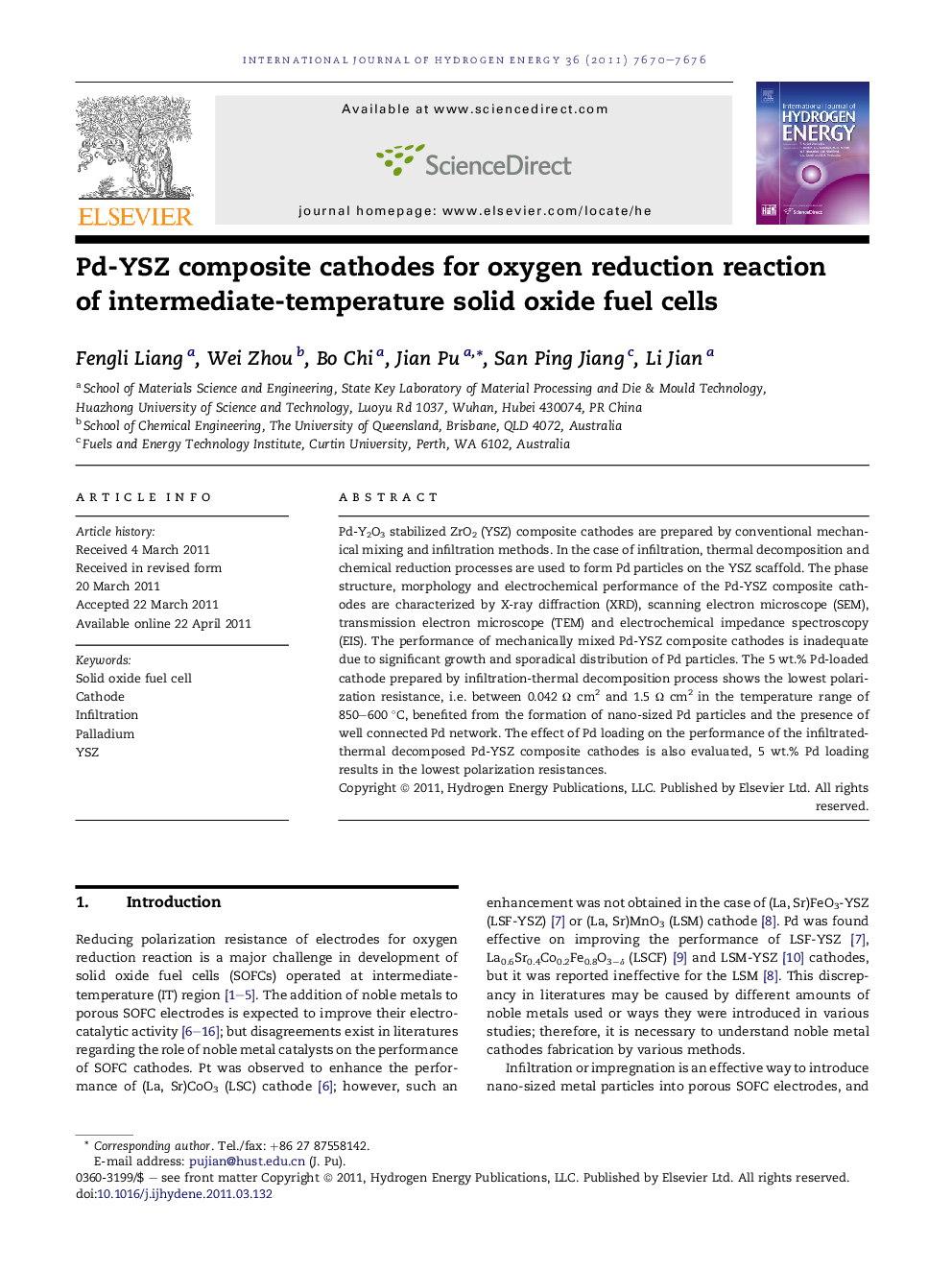| Article ID | Journal | Published Year | Pages | File Type |
|---|---|---|---|---|
| 1279295 | International Journal of Hydrogen Energy | 2011 | 7 Pages |
Pd-Y2O3 stabilized ZrO2 (YSZ) composite cathodes are prepared by conventional mechanical mixing and infiltration methods. In the case of infiltration, thermal decomposition and chemical reduction processes are used to form Pd particles on the YSZ scaffold. The phase structure, morphology and electrochemical performance of the Pd-YSZ composite cathodes are characterized by X-ray diffraction (XRD), scanning electron microscope (SEM), transmission electron microscope (TEM) and electrochemical impedance spectroscopy (EIS). The performance of mechanically mixed Pd-YSZ composite cathodes is inadequate due to significant growth and sporadical distribution of Pd particles. The 5 wt.% Pd-loaded cathode prepared by infiltration-thermal decomposition process shows the lowest polarization resistance, i.e. between 0.042 Ω cm2 and 1.5 Ω cm2 in the temperature range of 850–600 °C, benefited from the formation of nano-sized Pd particles and the presence of well connected Pd network. The effect of Pd loading on the performance of the infiltrated-thermal decomposed Pd-YSZ composite cathodes is also evaluated, 5 wt.% Pd loading results in the lowest polarization resistances.
Graphical abstractFigure optionsDownload full-size imageDownload as PowerPoint slideHighlights► Pd-YSZ composite cathodes were prepared by conventional mechanical mixing and infiltration methods. ► Thermal decomposition and chemical deposition processes were used to obtain Pd particles. ► Infiltrated Pd-YSZ composite cathode prepared from thermal decomposition shows the lowest area specific resistances because of the formation of nano-sized Pd particles and presence of well connected Pd network. ► The Pd-YSZ cathode with 5 wt.% Pd shows the lowest ASR. ► The mechanism of oxygen reduction reaction on Pd-YSZ cathode is discussed.
